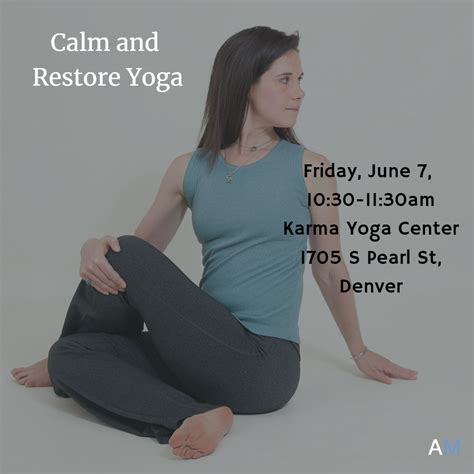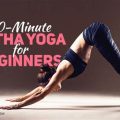6 Key Signs It’s Time to Switch to Gentler Yoga Practices
Yoga is often regarded as a universal practice suitable for everyone, but not all yoga styles are gentle on the body. As the popularity of intense yoga practices grows, many people overlook their body’s signals to opt for a softer approach. Listening to your body is key, especially if you’re experiencing physical strain or mental exhaustion. In this article, we’ll explore six clear signs indicating you may benefit from a gentler yoga routine. We’ll also cover essential tips, historical perspectives, case studies, and expert advice on incorporating a more mindful practice into your life.
1. Physical Pain and Discomfort After Class
While yoga can relieve tension, an aggressive routine may push your body too far. Pain, especially in joints and muscles, after a yoga session is a major indicator that your current practice may be too intense. Aggressive postures can lead to injuries such as:
- Knee pain: Often aggravated by deep squats or lunges that push the joints beyond their natural range of motion.
- Lower back pain: Excessive forward bends and twists may strain the lumbar spine.
- Wrist discomfort: Weight-bearing poses like Chaturanga can be hard on the wrists, particularly for beginners or those with pre-existing conditions.
Solution: Switching to Restorative Yoga or Yin Yoga, which focus on slower, mindful movement, can help alleviate these pains. These styles allow you to hold poses for longer with support, reducing the likelihood of injury.
Historical Context
Originally, yoga was practiced more as a meditative practice than as a physical exercise. Over time, however, the rise of power yoga and vinyasa flows has put greater emphasis on strength and endurance, sometimes at the expense of safety and mindfulness. Historically, yoga was about maintaining balance, not pushing boundaries.
2. Increased Stress Instead of Relaxation
Yoga should create a sense of calm, but if you leave class feeling more stressed than when you started, it’s a clear red flag. Intensive classes with complex flows, rapid transitions, or competitive environments can trigger anxiety. Factors like high-energy instructors, challenging poses, and crowded spaces may contribute to increased cortisol levels post-class.
Solution: Transitioning to gentler yoga, such as Hatha Yoga or Gentle Flow Yoga, can provide the mental space for breathing and reflection, which can help soothe stress rather than exacerbate it. These styles promote relaxation and mindfulness, providing a meditative experience while still allowing for movement.
Current State Analysis
Today, many yoga classes are designed to cater to people looking for intense physical workouts rather than relaxation or stress relief. The focus on fitness and physique often overshadows the calming, meditative aspects of traditional yoga. This shift explains why many practitioners find themselves feeling drained or anxious post-class rather than rejuvenated.
3. Burnout or Mental Exhaustion
Burnout isn’t just about physical fatigue; it’s often tied to mental strain as well. A demanding yoga practice can feel overwhelming when your mind is already stretched thin. Yoga is supposed to provide mental clarity, not contribute to burnout. Signs of mental exhaustion might include:
- Difficulty focusing or feeling distracted during yoga sessions.
- A sense of dread or anxiety before class.
- Lack of motivation or enthusiasm for practice.
Solution: Gentler practices like Restorative Yoga or Yoga Nidra emphasize deep relaxation and mental rest. These styles allow you to recharge both mentally and physically by focusing on simple, supportive poses and guided relaxation techniques.
4. Lack of Flexibility or Range of Motion
Yoga poses should feel accessible, but if you’re consistently struggling with flexibility or finding it difficult to get into positions, a gentler style may be beneficial. Yoga isn’t meant to force your body into unnatural shapes. Over time, pushing yourself too far can lead to injury and long-term discomfort.
Solution: Incorporating more passive poses through Yin Yoga can improve flexibility without overstressing the body. Yin Yoga encourages deep stretching through long-held, supported poses that gently increase your range of motion over time.
Case Studies
Case Study 1: Jane, a 45-year-old professional, experienced recurring lower back pain after a year of practicing high-intensity vinyasa yoga. After switching to Yin Yoga, her flexibility gradually improved, and her back pain subsided within six months.
Case Study 2: A study conducted by the American Council on Exercise found that participants practicing restorative yoga for 12 weeks experienced a 20% improvement in flexibility compared to those practicing power yoga.
5. Difficulty Sleeping or Relaxing Post-Yoga
Yoga is often recommended for improving sleep, but if you’re finding it hard to relax or sleep after a session, the intensity of your practice could be to blame. High-intensity workouts close to bedtime can leave your nervous system overstimulated, making it difficult to unwind.
Solution: A gentler yoga practice with a focus on breathing exercises (pranayama) and guided meditation can shift your body into a relaxed state. Practices like Yoga Nidra are especially effective for inducing sleep and relaxation.
Stakeholder Analysis
The growing wellness industry has increasingly promoted yoga as a high-energy fitness option. However, this shift doesn’t necessarily align with everyone’s needs. Stakeholders such as yoga instructors, wellness centers, and practitioners should recognize that not every individual benefits from an intense yoga regimen. It’s critical for instructors to assess their students’ needs and offer classes that cater to various levels of intensity.
6. Desire for a More Mindful and Slow Practice
If you find yourself yearning for more mindfulness and less intensity during your practice, this is a clear sign that gentler yoga is for you. Slower practices allow more time to focus on breath, alignment, and the mental aspects of yoga, which can be overlooked in fast-paced classes.
Solution: Try practices like Slow Flow Yoga or Gentle Hatha Yoga, which combine mindful movement with deliberate breathwork. These styles provide the opportunity to connect deeply with your body and mind.
Implementation Guidelines
- Start with Restorative Yoga: Focus on long-held, supported poses to help release tension.
- Prioritize Breathwork: Include Pranayama techniques in your routine to cultivate mindfulness and calm.
- Set Realistic Goals: Shift your focus from achieving complex poses to nurturing relaxation and alignment.
- Work with a Certified Instructor: Seek guidance from an instructor experienced in gentle yoga practices to ensure proper form and technique.
Ethical Considerations
The commercialization of yoga, particularly in the West, has led to the rise of highly competitive and physically demanding classes. This trend not only diminishes the spiritual aspects of yoga but also poses a risk for injury, particularly for beginners or those with pre-existing conditions. Ethically, instructors and studios should be more mindful of promoting accessibility and inclusivity, ensuring students feel empowered to choose practices that honor their physical and mental well-being.
Limitations and Future Research
While gentler yoga practices provide significant benefits for physical and mental health, they may not address all individual needs, particularly for those seeking strength or endurance training. More research is needed to explore the long-term effects of balancing gentle and intense yoga styles to optimize overall well-being. Additionally, future studies could investigate how yoga can be adapted for people with varying health conditions, including chronic pain or mobility issues, to create more inclusive practices.
Expert Commentary
Experts in yoga therapy and wellness agree that a gentler approach can be beneficial for those seeking balance and recovery. “Yoga is about listening to your body,” says Dr. Amy Michaels, a certified yoga therapist. “For many, stepping back from intense practices can unlock the true benefits of yoga—calm, flexibility, and mind-body awareness.” By focusing on gentler practices, you can still enjoy the physical benefits of yoga without overstretching your body or mind.
In conclusion, if you find yourself in pain, stressed, or mentally drained after yoga, it might be time to explore a gentler practice. By doing so, you can cultivate a more balanced, sustainable yoga experience that nurtures both your body and mind.








